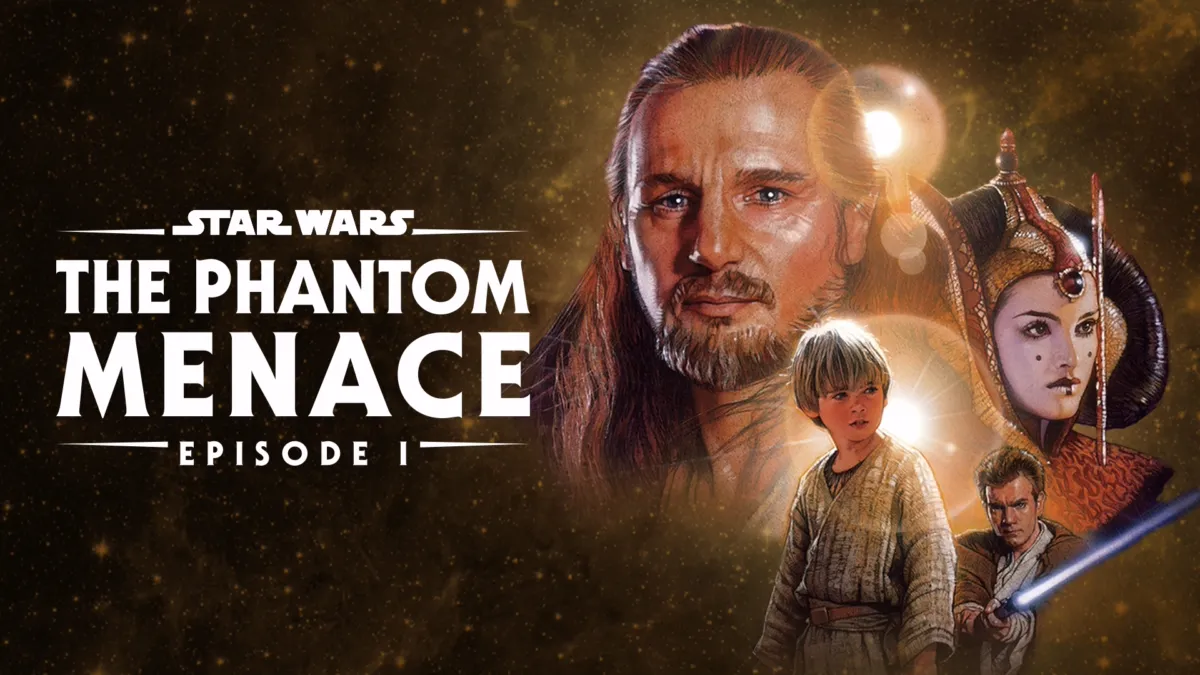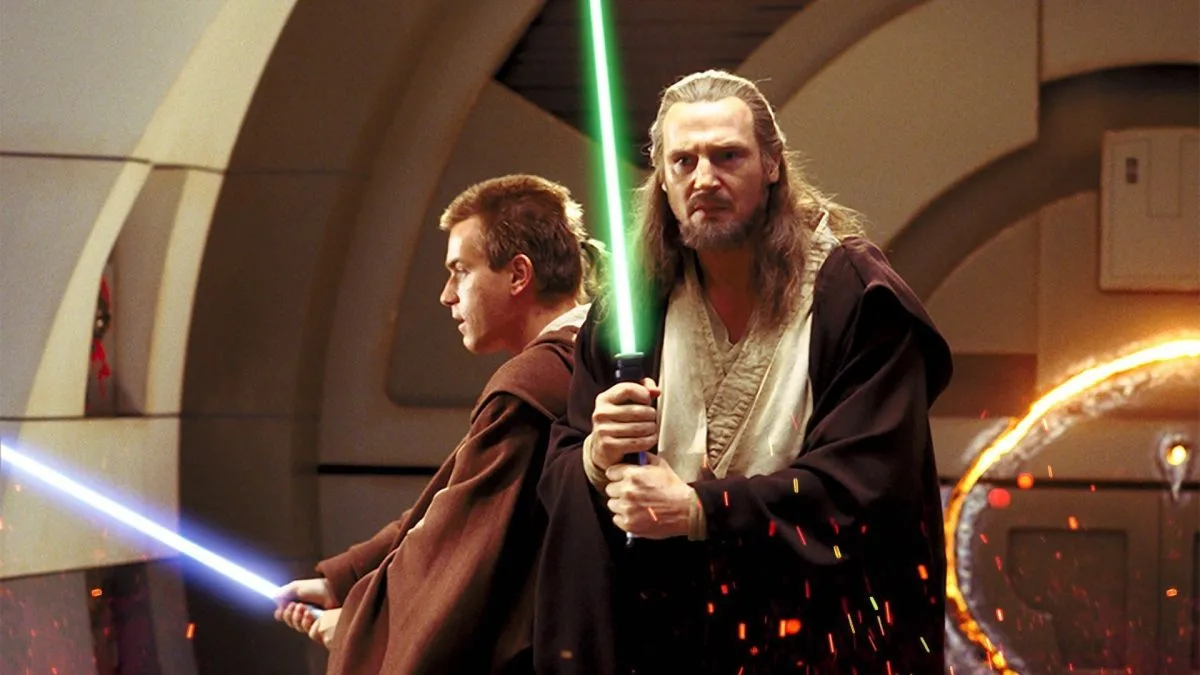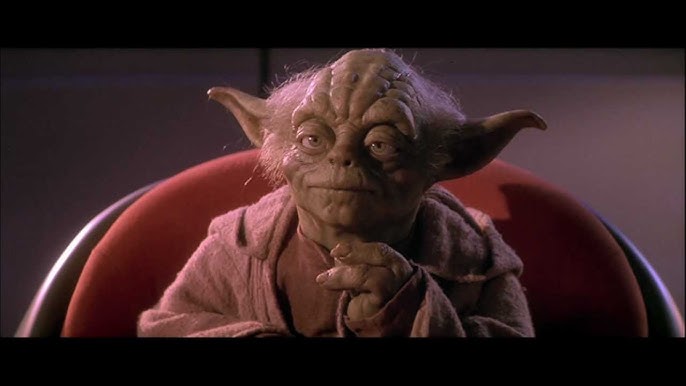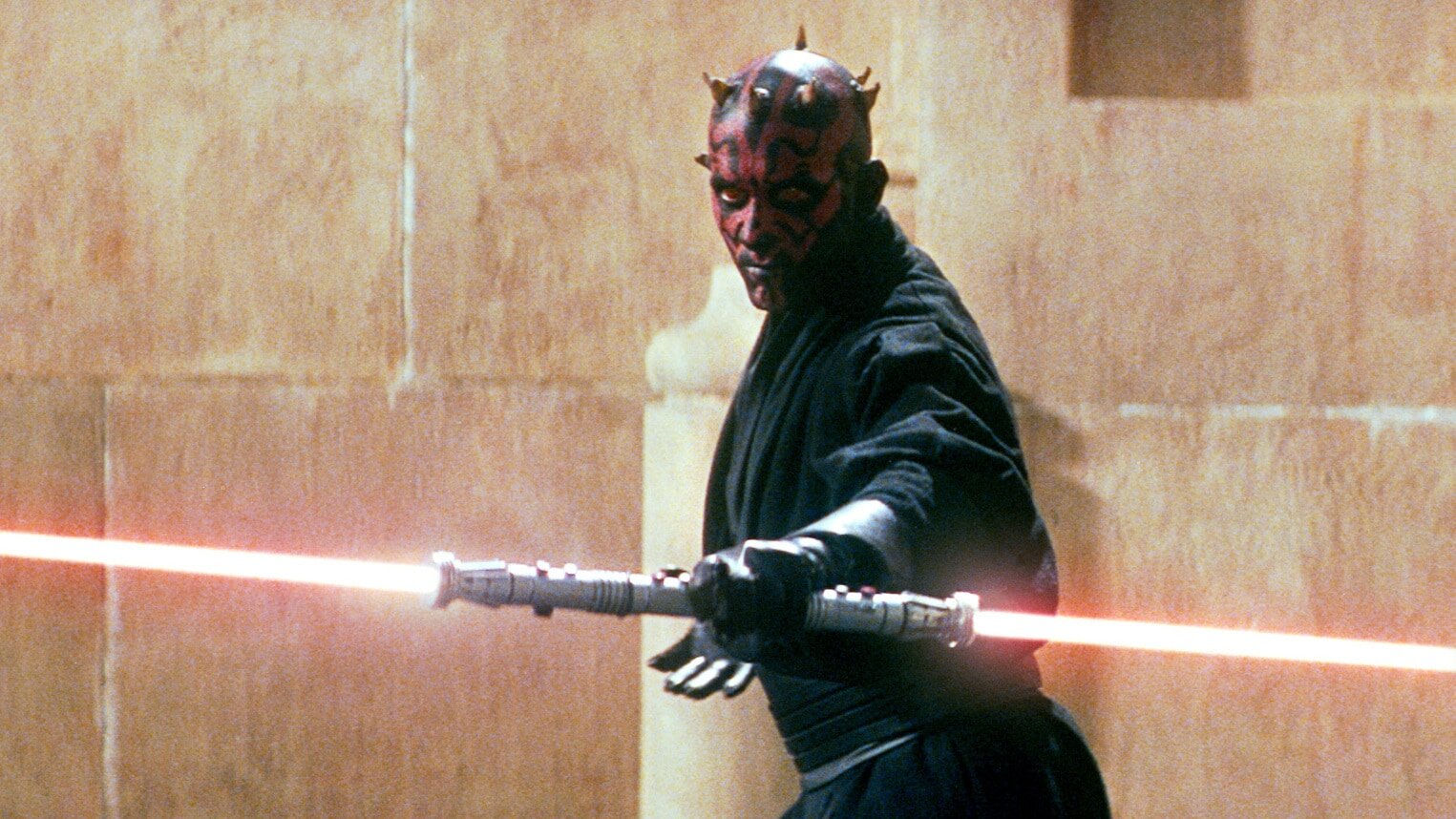Star Wars: Episode I – The Phantom Menace (1999)

Star Wars: Episode I – The Phantom Menace (1999) marked the long-awaited return of George Lucas to the galaxy far, far away, serving as the first chapter in the prequel trilogy that sought to explore the origins of the epic Skywalker saga. Set decades before the events of the original trilogy, the film dives into the political intrigue, ancient Jedi lore, and the rise of forces that would shape the galaxy’s fate.
The story begins with two Jedi Knights, the wise and composed Qui-Gon Jinn (Liam Neeson) and his ambitious apprentice Obi-Wan Kenobi (Ewan McGregor), on a diplomatic mission to resolve a trade dispute orchestrated by the sinister Trade Federation. However, they soon discover that the blockade of Naboo is merely the first step in a grander, more insidious plan. After rescuing Queen Padmé Amidala (Natalie Portman) from invasion, the group is forced to seek refuge on the desert planet of Tatooine, where they encounter a young slave boy named Anakin Skywalker (Jake Lloyd).
Anakin, brimming with untapped potential and a connection to the Force that defies understanding, quickly becomes the focal point of Qui-Gon’s mission. Believing the boy to be the Chosen One prophesied to bring balance to the Force, Qui-Gon wagers everything to free him and bring him into the Jedi fold. Meanwhile, in the shadows, the enigmatic Darth Sidious manipulates events, setting the stage for the Sith’s return and the eventual downfall of the Republic.
Visually, The Phantom Menace is a landmark in filmmaking, blending groundbreaking CGI with traditional practical effects to create a richly detailed galaxy. From the shimmering underwater city of Otoh Gunga to the bustling markets of Mos Espa, every frame is brimming with life and imagination. The pod-racing sequence, a thrilling showcase of speed and danger, remains one of the film’s most iconic moments, exemplifying Lucas’s ability to blend action and spectacle.
The introduction of Darth Maul (Ray Park), with his menacing double-bladed lightsaber and silent intensity, provided the saga with one of its most visually striking villains. The climactic duel between Maul, Qui-Gon, and Obi-Wan is a masterclass in choreography, underscored by John Williams’ legendary “Duel of the Fates,” a sweeping and operatic score that elevates the tension and stakes of the battle.
At its core, The Phantom Menace is a tale of beginnings: the rise of Anakin Skywalker, the seeds of the Republic’s decline, and the first moves in the Sith’s long-concealed plan for domination. The film delves into political machinations, exploring themes of corruption, power, and the fragility of democracy. It also lays the groundwork for Anakin’s tragic arc, hinting at the inner conflict and destiny that will define him in later episodes.
Critics and fans were divided upon the film’s release, with some praising its ambitious world-building and visual innovation, while others criticized elements like pacing, dialogue, and the polarizing character of Jar Jar Binks. However, over time, The Phantom Menace has garnered a reevaluation, appreciated for its thematic depth, its introduction of memorable characters, and its bold expansion of the Star Wars universe.
Ultimately, The Phantom Menace is a film of contrasts: innocence and darkness, hope and foreboding, beginnings and inevitable ends. It may have sparked debate, but its legacy as the gateway to an unforgettable chapter of the Star Wars saga remains undeniable. For many, it is a nostalgic return to the galaxy they love, while for others, it is the spark that ignited a new era of fandom.











